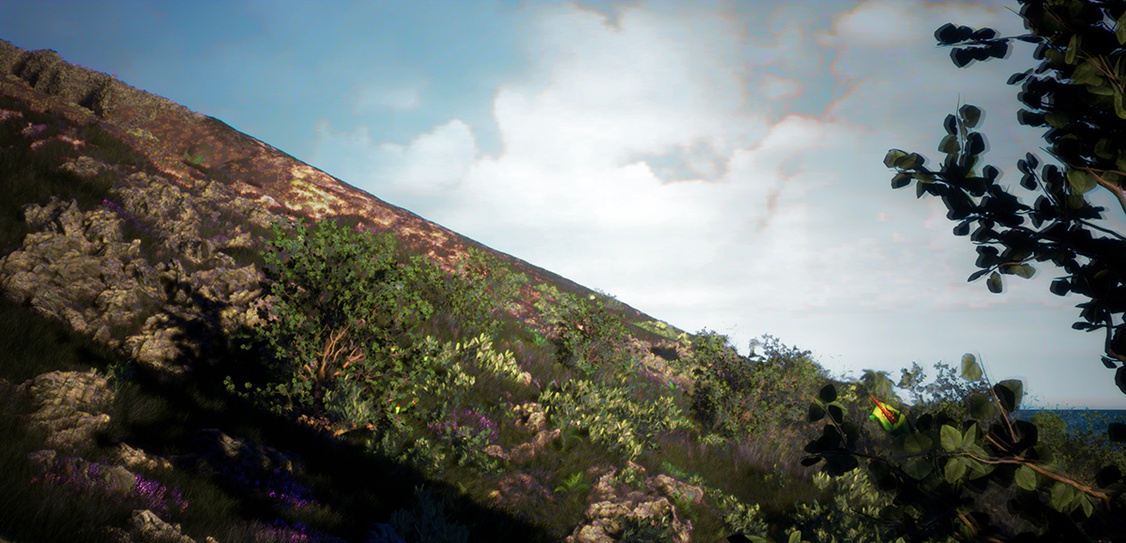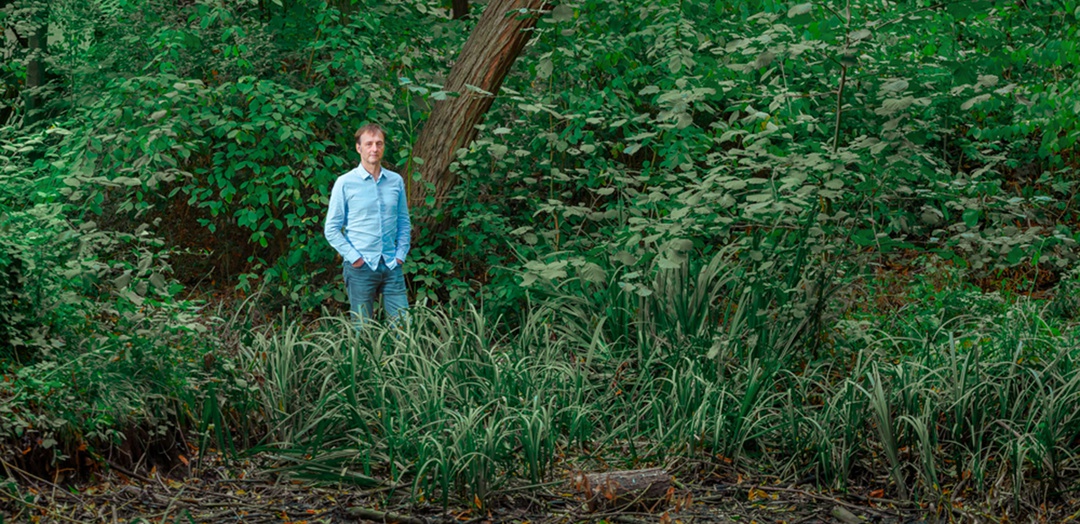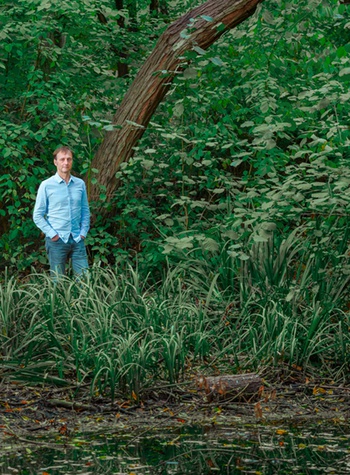Usually, the sonic space of an exhibit is not inhabited by sounds made by the works, but by the public’s murmurs and mumbles. It is usually a space in which we move. Generally, we don’t come to an exhibit to listen to music. Hearing is the sense that is called upon the least. Willingly, at least.
“We are in a civilization of images where listening to our environment, paying attention to the sounds around us, is not something we are used to doing,” notes Jean-Luc Hervé. “In order to encourage the audience to be attentive in an environment that is not completely silent, I observed what happens in nature. During a bird-watching trip near a town, even when there are parasite noises (cars or other sounds from the town), if the ear is paying attention to the birds singing, we don’t hear the background noise any more, we pay attention only to the “bird” sounds, even if they are discreet. We listen for rare sounds, the happy surprise of a song never heard. Here, I try to intrigue the visitor, wake up their audio curiosity despite the background noise. The idea is to create a sound environment for the entire exposition, to not be totally in a gallery, but to transform the space with the sound, to give the visitors the feeling they are waking into a specific biotopia. This is where the name of the work comes from.”
 Ginsberg Alexandra Daisy, Agapakis Christina, Sissel ToolasThe Sublime Hibiscus Landscape, 2018-2019
Ginsberg Alexandra Daisy, Agapakis Christina, Sissel ToolasThe Sublime Hibiscus Landscape, 2018-2019
Resurrecting the Sublime: reconstruction numérique du spécimen disparu, Hibiscadelphus wilderianus, du versant sud du mont Haleakala, sur l’île de Maui, à Hawaï.
© Gray Herbarium of Harvard University © Christina Agapakis of Ginkgo Bioworks, Alexandra Daisy Ginsberg & Sissel Tolaas © Alexandra Daisy Ginsberg
On the other hand, in an exhibition, neither the listening times nor the musical discourse are the same as in a concert. The public wanders through a gallery from one work to another, decides on their path and the amount of time spent in front of each work. It is the public that imposes time constraints on the works. “This is another limitation on the musical discourse that is be built with sound forms over time,” says the composer. “It is probably for this reason that that aspect is absent from most sound installations that favor a physical approach to sound, generally associated with a visual object. Furthermore, the music is created from silence and it is obvious that continual sound material won’t work because it becomes background music, or decoration, combined with the other sounds around us that we don’t listen to.”
Here again, the bird-watching trip model is precious. “It is not by accident that composers are always interested in birdsongs. Among the “noises” that furnish our environment, they are almost the only ones that have complex temporal forms. A birdsong is a fairly short type of music, lasting only a few seconds, that is repeated with variations. Each species is characterized by its song but within a species, each individual has its own particularities. The individuals found within a single territory respond to each other, creating a polyphony where, like in counterpoint, each voice is in relation to the others. Here also, each sound agent regularly emits short sound sequences of the same type, but varied, and always renewed. Each individual listens to his closest neighbor, including his song in the ensemble. Thus, a large-scale polyphony is formed. A polyphony in which each agent has their own sound identity, their own individual variability. A polyphony that takes over the entire building, breathing an organic sound presence into the architecture.”
It is important to note that it is the form of birdsongs (and more generally animal populations: birds, insects, amphibians), meaning their temporal and polyphonic structure that is used as a model. The sound material used does not, in any case, imitate birdsongs or calls.



